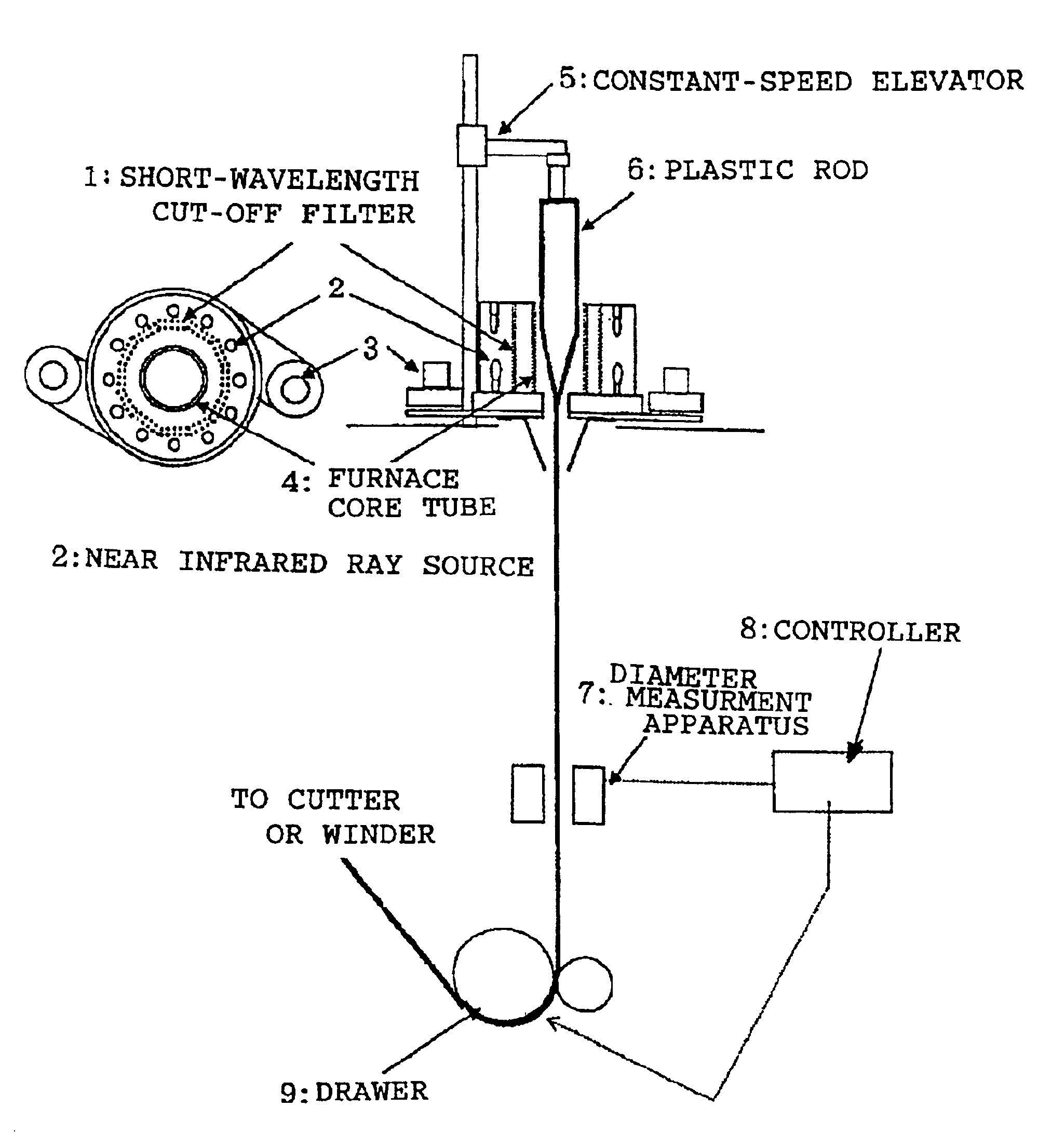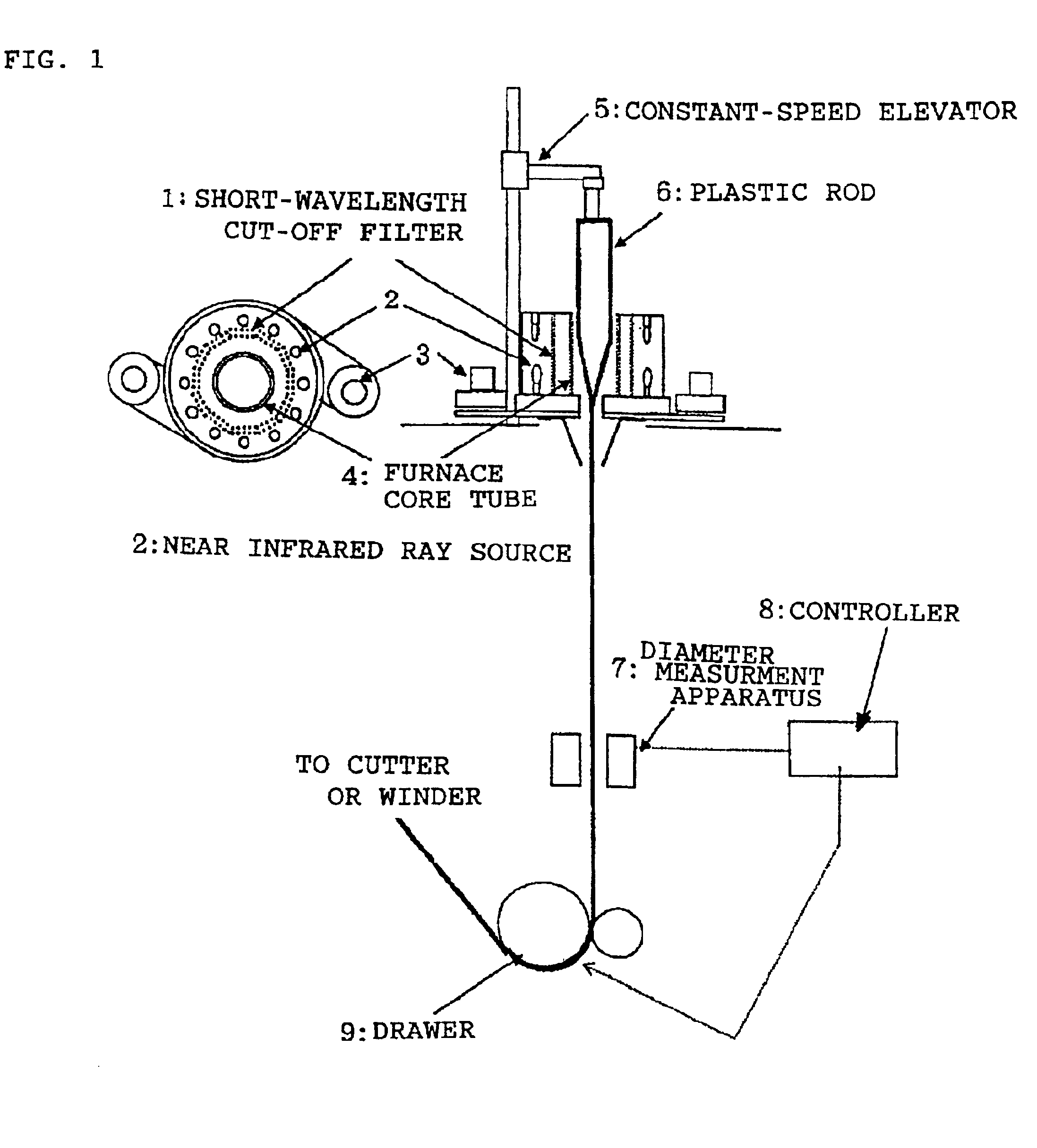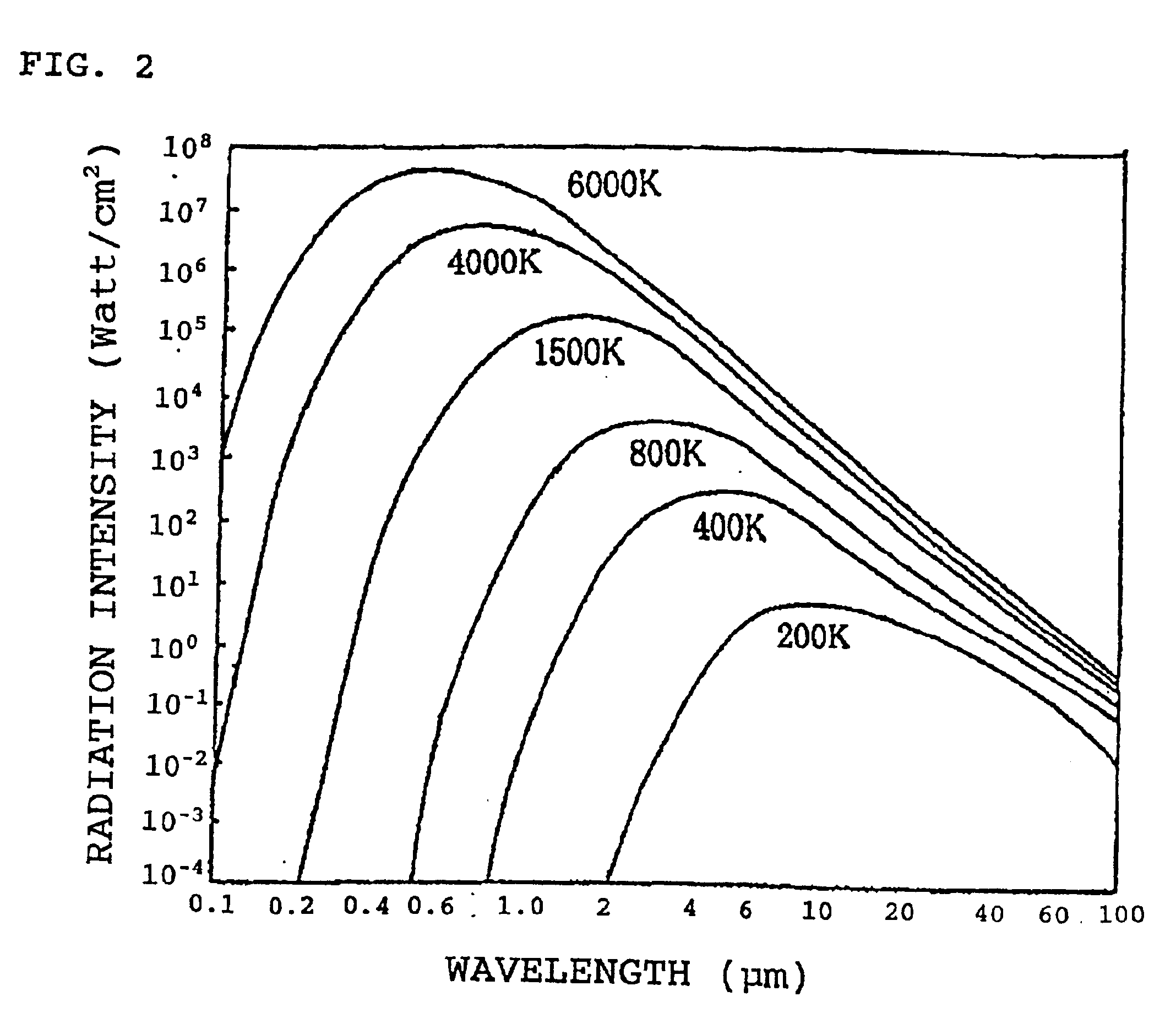Method of manufacturing plastic optical fiber
- Summary
- Abstract
- Description
- Claims
- Application Information
AI Technical Summary
Benefits of technology
Problems solved by technology
Method used
Image
Examples
example 1
[0031]In the near infrared ray furnace and the drawing apparatus shown in FIG. 1, the near infrared ray sources 2 were provided as two stages of twelve (twenty four in total) halogen lamps (color temperature of 2750K for supply voltage of 100V, lamp supply voltage of 75V, and current of 19.5A) arranged at uniform intervals on a circle with a radius of 120 mm. Inside such an arrangement of halogen lamps, there is mounted an infrared ray transmitting filter (ITF-50S-80IR, manufactured by Sigma Koki Co., Ltd.) with the transmission characteristic shown in FIG. 5. In the apparatus, a rod for a plastic optical fiber with a diameter of 70 mm was set which comprises polystyrene resin (core material) and acrylic resin (cladding material). The top end of thus set rod was introduced into the halogen lamp near infrared ray furnace with a moving down speed of 1.65 mm / min for being heated. The resin, heated, softened and hung down from the rod, was introduced to the drawer (drawing speed of 7.2 ...
example 2
[0032]In the apparatus used for the example 1, a 70 mm diameter rod for a plastic scintillating fiber was introduced which rod comprises polystyrene resin containing fluorescent dyes for a plastic scintillator (core material) and acrylic resin (cladding material). The rod was heated and drawn under a heating condition and with a moving down speed both the same as those for the rod in the example 1. This allowed a 1 mm diameter plastic scintillating fiber to be manufactured without producing any blowing bubbles. Fluorescent dyes contained in the polystyrene resin are 1% of 2-(4-tbutylphenyl)-5-(4-biphenyl)1,3,4 oxadiazole, and 0.02% of 4-4′bis(2,5 dimethyl styryl)diphenyl. In the example 2, a drawing speed at the drawer 9 was 7.5 m / min. The plastic scintillating fiber provided a satisfactory light yield characteristics without any problem with an attenuation length as an index of transparency being superior as 380 cm.
example 3
[0033]In the apparatus used for the example 1, a 100 mm diameter rod for a plastic optical fiber was introduced which rod comprises polystyrene resin (core material) and polymethylmethacrylate resin (cladding material). The rod was heated and drawn to allow a 1 mm diameter plastic optical fiber to be manufactured without producing any blowing. In the example 3, the halogen lamp was operated by a supply voltage of 85V with a current of 22.5A. The moving down speed of the rod was 2.0 mm / min, and the drawing speed at the drawer 9 was 19.5 m / min. The measured transmission loss of the plastic optical fiber was 185 dB / km at the wavelength of 670 nm.
PUM
| Property | Measurement | Unit |
|---|---|---|
| Temperature | aaaaa | aaaaa |
| Temperature | aaaaa | aaaaa |
| Length | aaaaa | aaaaa |
Abstract
Description
Claims
Application Information
 Login to View More
Login to View More - R&D
- Intellectual Property
- Life Sciences
- Materials
- Tech Scout
- Unparalleled Data Quality
- Higher Quality Content
- 60% Fewer Hallucinations
Browse by: Latest US Patents, China's latest patents, Technical Efficacy Thesaurus, Application Domain, Technology Topic, Popular Technical Reports.
© 2025 PatSnap. All rights reserved.Legal|Privacy policy|Modern Slavery Act Transparency Statement|Sitemap|About US| Contact US: help@patsnap.com



